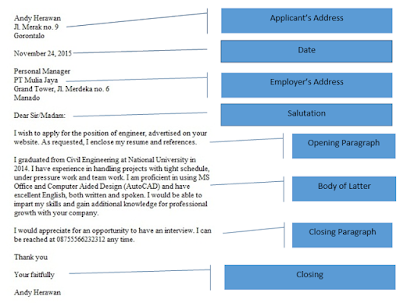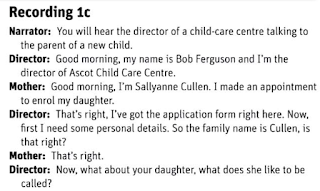Conditional Sentences Type 1
Objectives
• Learners are able to understand the use of conditional if (type I) in sentences
• Learners are able to guess possible result from certain present condition or do logical reasoning.
• Learners are able to guess possible result from certain present condition or do logical reasoning.
Learn about it!
Look at the following statements and learn what they mean:
If the voters are not satisfied, the election will likely be repeated.
The above sentence means that re-election will likely be done if the voters are not happy with the result.
If the oil price keeps raising, other prices will increase immediately.
The above sentence means that prices of other products will improve very soon if the oil price keeps raising.
If she keeps studying hard, she will pass the exam with good results.
The above sentence means that she will pass the examination with good results if she keeps studying hard.
Conditional Sentences Type 1 is used to make prediction that may happen in the future when certain condition is fulfilled in the present. The predicted situation is as the most possible result to occur. However, when the present condition cannot meet the requirement, the future result won’t exist.
Conditional sentence has two parts: the ‘if clause’ and the main clause. The ‘if clause’ belongs to the present condition that needs to be fulfilled and the main clause belongs to future condition that occurs as the result.
The pattern can also be switched. So, the main clause comes first and then followed by the IF clause.
Keypoints
- Conditional If (type I) is used to make prediction that may happen in the future when certain condition is fulfilled in the present.
- The pattern is If + Simple Present for the if clause, and followed by main clause in future tense (will).
- You need to put a comma when the if clause comes first, but you don not need one when the main clause comes first.
Conditional Sentence Type 2
Objectives
Understand the meaning, form, and use of type 2 conditional sentences in the daily life context.
Learn about it!
You have already learned about type 1 conditional sentence in the previous lesson. In this lesson you will learn about type 2 conditional sentence in daily life context.
Understanding the Meaning of Type 2 Conditional Sentence
Type-2-conditional sentences are commonly used to talk about unreal and impossible conditions. It is called as unreal condition because there is no possibility that the condition stated in the sentence will happen. The sentence is on the contrary with the facts. You may ever imagine at present time about something that is impossible to happen.
Read the following example:
You want to go hiking, but your parents do not allow you to go because of bad weather. Or you imagine you go to the moon and build a satellite tower there, but in fact you are only common student so it is impossible to happen at present time.
Form of Type 2 Conditional Sentence
Conditional sentence consists of two clauses namely main clause and if clause. You can put the main clause as the first clause or in the second clause. Therefore, it’s not important which clause comes first. The tense in the 'if' clause is the simple past, and the tense in the main clause is the present. However, making type 2 conditional sentence requires to present the fact. It happens at the present time.
To construct second conditional sentence, you should pay attention to the form below:
To construct second conditional sentence, you should pay attention to the form below:
IF + PAST TENSE, SUBJECT + WOULD + BARE INFINITIVE
Example:
1. If he had a lot of money, he would buy a car.
It means that he doesn’t have much money and he couldn’t buy a car.
It means that he doesn’t have much money and he couldn’t buy a car.
2. If you brought an umbrella, you would not get wet.
It means that you get wet because you do not bring umbrella.
It means that you get wet because you do not bring umbrella.
3. If I were Agnes Monica, I would be famous.
It means that I am not Agnes Monica and I am not as famous as her.
It means that I am not Agnes Monica and I am not as famous as her.
The sentences above explain how you try to imagine do something is contrary with the facts.
Let's think!
If the “if” clause comes first, you should use a comma. You don’t need to put comma if the “if” clause comes second.
Conditional Sentences Type 3
Objectives
Understanding meaning, structure, and usage of conditional sentences type 3 in daily activity.
Learn about it!
Function
Have you ever regretted about things you did or did not do in the past?
Sometimes in life, we wish that something would have happened differently from reality.
Sometimes in life, we wish that something would have happened differently from reality.
To express this kind of situation in English, there is a certain sentence called ‘conditional sentence (type 3)’. This is what you are going to learn from this lesson.
Take a look at the following example:
If she had studied law in college, she would have become a lawyer.
‘If she had studied law in college’ means she did not study law in college.
And ‘she would have been a lawyer’ means she is not a lawyer.
The sentence tells us that it is impossible for her to become a lawyer now because she did not study law in college.
And ‘she would have been a lawyer’ means she is not a lawyer.
The sentence tells us that it is impossible for her to become a lawyer now because she did not study law in college.
Conditional sentence type 3 is used to express an impossible situation and its probable result in the past.
The situation is unreal because it did not happen. This type of conditional expresses the contrary of the reality and most of the time it implies regret. Read another example below.
If I had eaten breakfast, I would not have fainted.
The sentence says “If I had eaten breakfast”, in reality ‘I did not eat breakfast’.
“I would not have fainted” means that in reality ‘I fainted’. The sentence implies ‘my regret for not having breakfast’.
“I would not have fainted” means that in reality ‘I fainted’. The sentence implies ‘my regret for not having breakfast’.
Conditional sentence is divided into two clauses: ‘IF CLAUSE’ and ‘MAIN CLAUSE’.
- ‘IF CLAUSE’ is the clause with the word ‘if’. It usually indicates the condition.
- ‘MAIN CLAUSE’ is the rest, the clause without ‘if’. It usually indicates the result. Take a look at the following example:
I would have won the contest if I had practiced more often.
The main clause “I would have won the contest” indicates the probable result of the condition. The condition itself is indicated by if clause, “if I had practiced more often”. The real situation is I did not win the contest and I did not practice more often.
Form
The verb that is used in conditional type 3 is in ‘past participle’ form.
Look at the previous examples:
Look at the previous examples:
- If she had studied law in college, she would have become a lawyer.
- If I had eaten breakfast, I would not have fainted.
- I would have won the contest if I had practiced more often.
- The verbs in the first example are ‘studied’ which is past participle of study, and‘become’ which is past participle of become.
- The second one are ‘eaten’ which is past participle of eat, and ‘fainted’ which is past participle of faint.
- The last ones are ‘won’ which is past participle of win; and ‘practiced’ which is past participle of practice.
The ‘IF CLAUSE’ is always written in past perfect tense. While the ‘MAIN CLAUSE’ is always written in perfect conditional.
Look at the ‘IF CLAUSE’ in example number 1: after the SUBJECT (She) there is always ‘had’ with ‘past participle verb’ (studied), so the ‘IF CLAUSE’ is If she had studied.
Look at the ‘MAIN CLAUSE’ in example 1: after the SUBJECT (she), there is ‘would have’ with ‘past participle verb’ (become), so the sentence is she would have become.
Look at the ‘MAIN CLAUSE’ in example 1: after the SUBJECT (she), there is ‘would have’ with ‘past participle verb’ (become), so the sentence is she would have become.
The verbs in both clauses are always in past participle.
‘IF CLAUSE’ can be written first and ‘MAIN CLAUSE’ next or vice versa. It would not change the meaning.
IF CLAUSE: IF + (Subject) + had + past participle
MAIN CLAUSE: IF + (Subject) + would have + past participle














Follow Us
Were this world an endless plain, and by sailing eastward we could for ever reach new distances